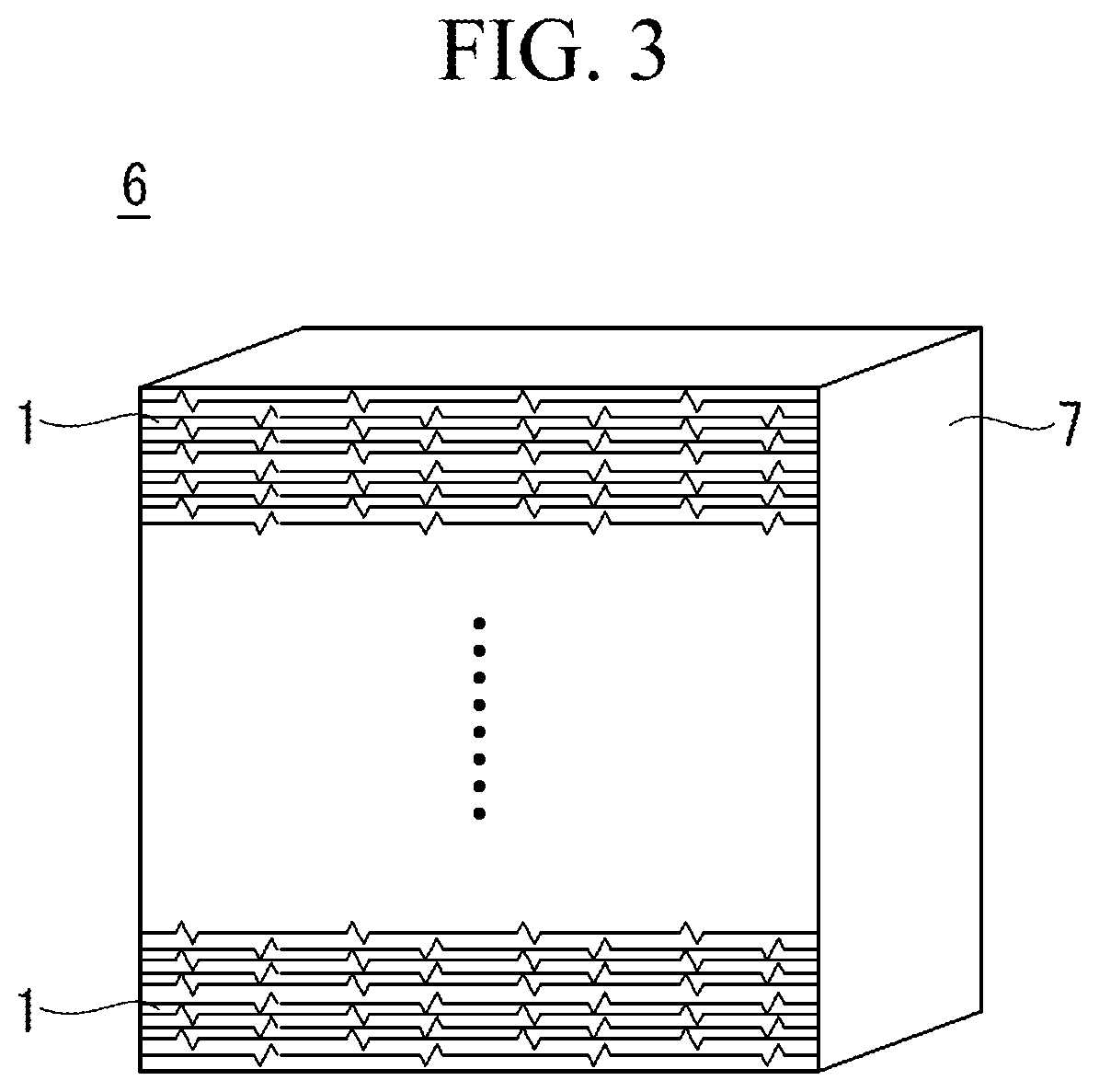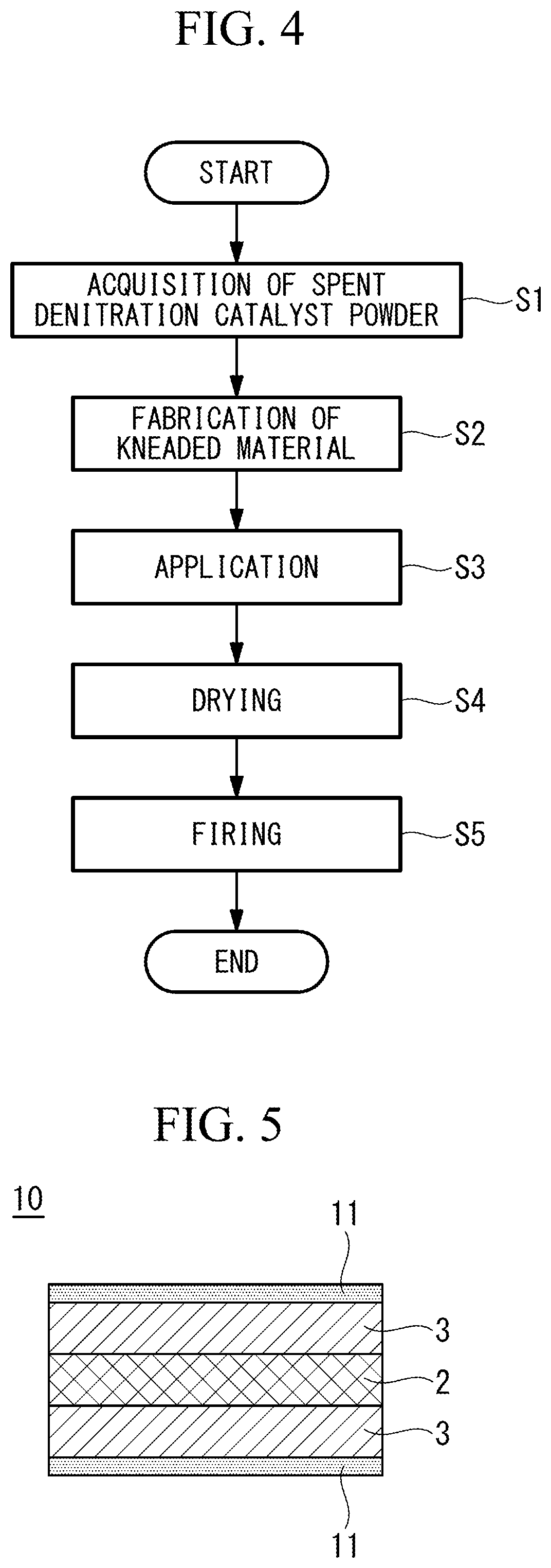Regenerated denitration catalyst and method for manufacturing the same, and denitration apparatus
a denitration catalyst and denitration technology, applied in the direction of catalyst regeneration/reactivation, physical/chemical process catalysts, separation processes, etc., can solve the problem of denitration performance drop
- Summary
- Abstract
- Description
- Claims
- Application Information
AI Technical Summary
Benefits of technology
Problems solved by technology
Method used
Image
Examples
first embodiment
[0031]A regenerated denitration catalyst according to this embodiment includes a spent denitration catalyst including a first titanium oxide as a main component, and a second titanium oxide. In the regenerated denitration catalyst, the first titanium oxide included in the spent denitration catalyst and the second titanium oxide are mixed. The titanium oxide (the first titanium oxide and the second titanium oxide) may be included in the regenerated denitration catalyst, for example, in the range of 60% by weight to 85% by weight, preferably in the range of 70% by weight to 80% by weight, based on the total weight of the regenerated denitration catalyst.
[0032]The “first titanium oxide” is the after-use naming of titanium oxide that is included in a denitration catalyst before use. The “main component” refers to a component included in a target in the largest amount. The specific surface area per unit weight of the titanium oxide included in the denitration catalyst before use may be, ...
second embodiment
[0062]FIG. 5 illustrates a partial section of a regenerated denitration catalyst according to this embodiment. In the regenerated denitration catalyst 10 according to this embodiment, on the surfaces of the catalyst layers 3 of the first embodiment, active layers 11 that activate the catalyst layers 3 are provided. The active layer 11 includes vanadium (including a vanadium compound) and at least one of tungsten (including a tungsten compound) or molybdenum (including a molybdenum compound).
[0063]FIG. 6 shows a flow diagram of a manufacturing process according to this embodiment. The manufacturing method according to this embodiment includes (S11) the acquisition of a spent denitration catalyst powder, (S12) the fabrication of a kneaded material, (S13) application, (S14) coating treatment, (S15) drying, and (S16) firing.
[0064]The above (S11) to (S13), (S15), and (S16) are steps similar to the (S1) to (S5) of the first embodiment, and therefore description is omitted.
(S14) Coating Tr...
PUM
| Property | Measurement | Unit |
|---|---|---|
| denitration reaction temperature | aaaaa | aaaaa |
| specific surface area | aaaaa | aaaaa |
| specific surface area | aaaaa | aaaaa |
Abstract
Description
Claims
Application Information
 Login to View More
Login to View More - R&D
- Intellectual Property
- Life Sciences
- Materials
- Tech Scout
- Unparalleled Data Quality
- Higher Quality Content
- 60% Fewer Hallucinations
Browse by: Latest US Patents, China's latest patents, Technical Efficacy Thesaurus, Application Domain, Technology Topic, Popular Technical Reports.
© 2025 PatSnap. All rights reserved.Legal|Privacy policy|Modern Slavery Act Transparency Statement|Sitemap|About US| Contact US: help@patsnap.com



